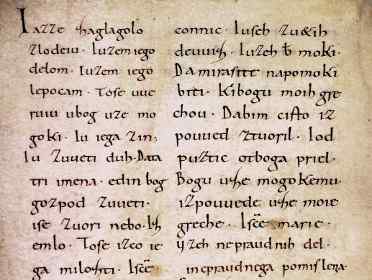Carolingian Renaissance

What is Carolingian Renaissance
Carolingian Renaissance is a cultural and intellectual revival which started during the reign of Charlemagne in the late 8th century and lasted until the breakup of Charlemagne’s empire at the end of the 9th century. It was very different from the Italian Renaissance that spread throughout Europe in the Late Middle Ages, while its effects remained mostly limited to a small group of high nobility and clergy. It was fundamentally Christian as it was almost exclusively carried out by and for the clergy. However, it went beyond the churchly matters, reversed the cultural decay of the Dark Ages and laid the foundation for the rise of the Western civilization.
Frankish Culture
The Realm of the Franks at its height rivaled the Western Roman Empire in both territorial extent and political power but it was backward in compare to the Roman culture and society. There were virtually no cities that had been the centers of culture, art and intellectual life during the Roman Empire, while early medieval Europe was virtually completely illiterate. In addition, vulgar Latin began to diverge into the precursors of modern Romance languages and not all priests were able to understand and interpret the Vulgate Bible, a late 4th century Latin version of the Bible. As a man of faith and sworn protector of the Church, Charlemagne felt that it was his duty to improve education of the clergy to teach the faith properly as well as to help him govern through the network of bishops whom he used for carrying out the administrative tasks.
Carolingian Minuscule
Charlemagne’s educational reform required development of standardized Latin and more legible script. He invited the elite scholars from all over Europe to his court in Aachen including Peter of Pisa, Paul the Deacon, Alcuin of York, Einhard, Theodulf of Orleans and many others who established the basis for the intellectual revival. The so-called medieval Latin became the standard form of the language and was adopted as the language of medieval scholars and Roman Catholic Church as well as the language of literature, science, law and administration. The scholars at Charlemagne’s court also developed the Carolingian miniscule that was the writing standard in Europe until High Middle Ages, while the Renaissance humanists used it as a basis for the early modern Italic script which in turn was the model for modern typefaces.
Cathedral and Monastic Schools
Charlemagne and his successors fostered a network of cathedral and monastic schools throughout the Carolingian Empire where were taught seven Liberal Arts (grammar, rhetoric, dialectic, arithmetic, geometry, astronomy and music) and in first place, reading and writing. Einhard, who wrote Charlemagne biography reports that the Emperor of the Romans studied himself and that he kept the wax tables under his pillow in his bed to practice writing when he had time. However, he also mentions that the Emperor started too late in life and achieved little success. Revival of learning and the rising number of schools and libraries resulted in increased copying of the books, while the scribes did not only copy the Bible and other religious literature but also the works of Virgil and other classical authors. That way they helped preserve many ancient works that would probably be lost forever as the oldest preserved classical works are copies from the period of the Carolingian Renaissance.
Carolingian Art
The Carolingians were also major patrons of art. The surviving illuminated manuscripts, sculptures, metalworks and other artworks from the period of the Carolingian Renaissance reveal the influence of Roman and Byzantine styles as well as the Charlemagne’s effort to equalize himself with the great rulers of the past and the Byzantine Emperors in every aspect. The Carolingian art that is marked by a unique blend of the Mediterranean art forms and styles with the Germanic and Celtic traditions flourished until the end of the 9th century and had a major influence on both Romanesque and Gothic art.
Carolingian Architecture
Period of relative tranquility during the reign of Charlemagne and cultural revival that was continued by his immediate successors resulted in increased architectural activity. New cathedrals and monasteries as well as civic buildings rose up all over the Carolingian Empire. Charlemagne got involved in building activities himself and ordered construction of the Palace of Aachen which, unfortunately, is not preserved. The Palatine Chapel which is only surviving component of Charlemagne’s palace in Aachen and the later Carolingian buildings reflect the influence of Late Roman and Byzantine styles combined with own innovations, most notably the westworks (west-facing entrance to churches) which gave the Carolingian architecture a unique character.




